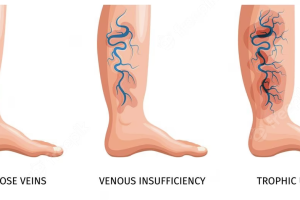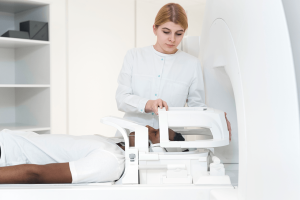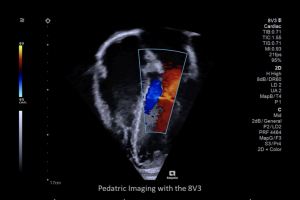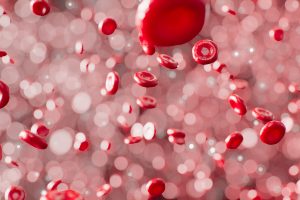The heart never takes a break. The heart is a strong muscle that never stops exercising, not for a minute. Every minute it needs blood, nourishment and oxygen. At Amarillo Heart Institute, we understand the importance of keeping your heart healthy and functioning at its best. We believe that a healthy heart is the foundation of a healthy life, and our goal is to provide you with all you need to achieve optimal heart health, a happier heart.
Peripheral Artery Disease
The peripheral arteries are a network of blood vessels that carry oxygen-rich blood from the heart to the various parts of the body beyond the heart and lungs. These arteries are located outside of the central nervous system and include arteries in the arms, legs, abdomen, and pelvis.
The peripheral arteries are essential for delivering oxygen and nutrients to the tissues of the body. Examples of peripheral arteries include the brachial artery in the arm, the femoral artery in the leg, and the iliac artery in the pelvis.
Peripheral Artery Disease
Peripheral artery disease (PAD) is a condition where the peripheral arteries, which carry oxygenated blood to the limbs and organs beyond the heart, become narrowed or blocked due to the buildup of fatty deposits called plaques.
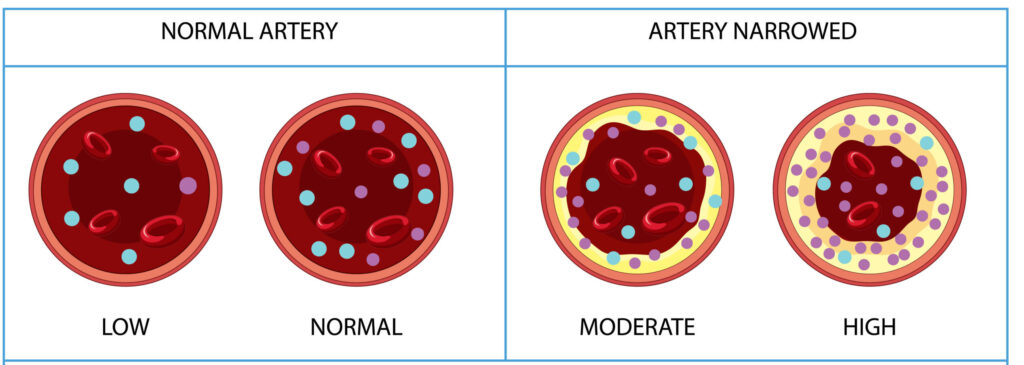
Image by brgfx on Freepik
Causes
The primary cause of PAD is atherosclerosis, a process in which cholesterol, fat, and other substances accumulate in the arterial walls, leading to the formation of plaques. Risk factors for PAD include smoking, diabetes, high blood pressure, high cholesterol, obesity, a sedentary lifestyle, and a family history of the disease.
Consequences
- Pain or discomfort in the legs while walking, which is called claudication. This occurs because the reduced blood flow to the legs can’t meet the increased demand of the muscles during physical activity.
- Tissue damage or loss, which may lead to non-healing sores, ulcers, or gangrene in the affected limbs, resulting in amputation in severe cases.
- Increased risk of heart attack or stroke, as people with PAD often have atherosclerosis in other blood vessels, including those that supply blood to the heart and brain.
- Reduced quality of life due to the limitations of physical activity and the presence of chronic pain and discomfort.
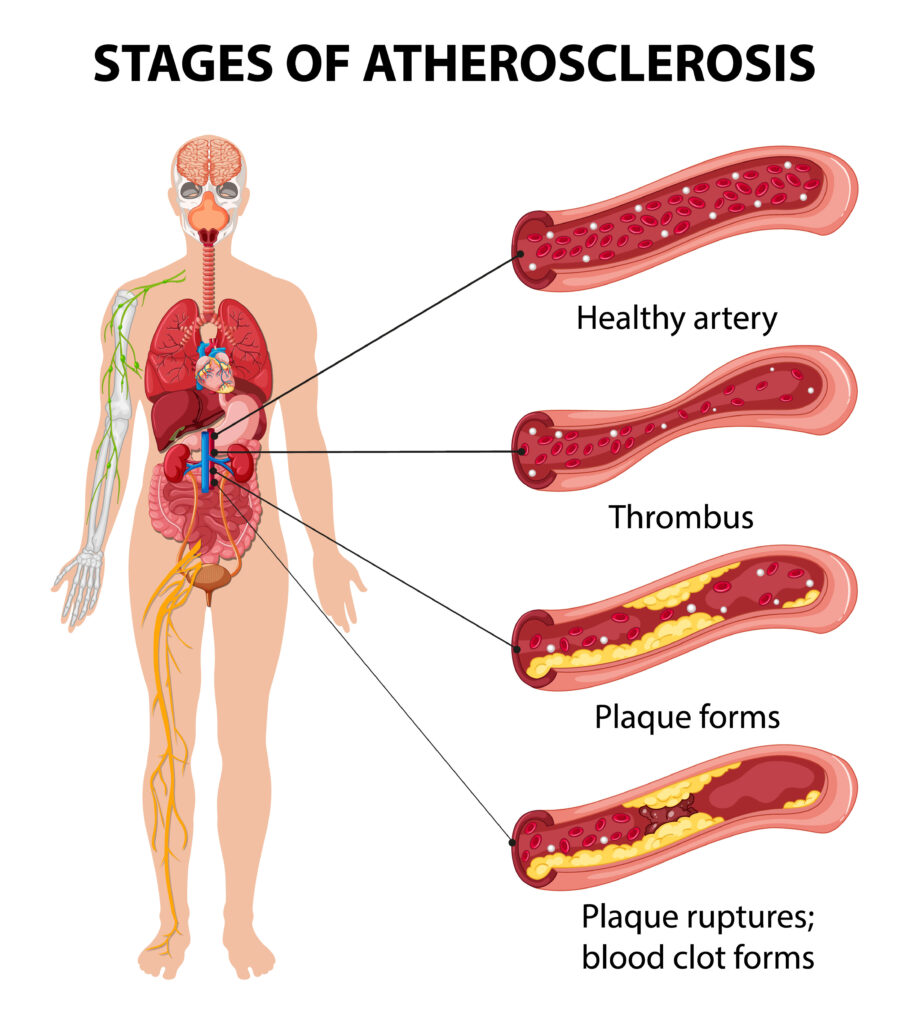
Image by brgfx on Freepik
Types of Peripheral Artery Disease (PAD)
Atherosclerosis: Atherosclerosis occurs when plaque builds up inside the arteries, narrowing them and restricting blood flow. This is the most common cause of PAD.
Buerger’s disease: Buerger’s disease, also known as thromboangitis obliterans, is a rare condition that causes inflammation and blood clots in the small and medium-sized arteries and veins in the hands and feet.
Raynaud’s disease: Raynaud’s disease is a condition that causes blood vessels in the fingers and toes to narrow, reducing blood flow and causing the skin to turn white or blue.
Thromboembolic disease: Thromboembolic disease occurs when a blood clot forms in a blood vessel, blocking blood flow to the affected area.
Vasculitis: Vasculitis is a condition that causes inflammation of the blood vessels, leading to narrowing or blockage of the affected vessels.
Popliteal artery entrapment syndrome: Popliteal artery entrapment syndrome is a condition in which the popliteal artery, which supplies blood to the lower leg and foot, is compressed or pinched by surrounding muscles or other tissues.
The symptoms and treatment options for these different types of PAD may vary depending on the underlying cause and severity of the disease. It’s important to work with a healthcare provider to accurately diagnose and treat PAD.
Treatment for PAD typically involves lifestyle modifications such as quitting smoking, regular exercise, a healthy diet, and weight management. Medications such as aspirin, statins, and blood pressure-lowering drugs may also be prescribed. In severe cases, procedures such as angioplasty or surgery may be necessary to restore blood flow to the affected limbs. Early diagnosis and treatment of PAD can help prevent complications and improve outcomes.
How to diagnose PAD:
Diagnosing PAD, typically involves a combination of medical history, physical examination, imaging tests, and laboratory tests.
Medical history: A healthcare provider will ask about your symptoms, risk factors for PAD, and any other relevant medical conditions.
Physical examination: A physical examination may include checking for weak or absent pulses, cool or pale skin, and signs of poor wound healing.
Ultrasound imaging.
Computed tomography (CT) angiography can help visualize the affected blood vessels and determine the severity of the disease.
Laboratory tests: Laboratory tests may be used to check for risk factors such as high cholesterol, diabetes, or kidney disease.
How to treat PAD:
Lifestyle modifications: Lifestyle modifications such as quitting smoking, maintaining a healthy weight, exercising regularly, and eating a heart-healthy diet can help improve symptoms and prevent progression of PAD.
Medications: Medications such as antiplatelet agents, cholesterol-lowering drugs, and medications to control blood pressure and blood sugar may be prescribed to help manage symptoms and reduce the risk of complications.
Endovascular procedures: Endovascular procedures such as angioplasty and stenting may be used to open up blocked or narrowed blood vessels and improve blood flow.
Surgery: In severe cases of PAD, surgery such as bypass surgery may be necessary to reroute blood flow around the blocked or narrowed arteries.
Wound care: For patients with non-healing wounds or ulcers, proper wound care can help prevent infection and promote healing.
The specific treatment approach for PAD may vary depending on the severity and underlying cause of the disease, and it’s important to work closely with a healthcare provider to develop a treatment plan that is tailored to your individual needs and health status.
How to prevent PAD:
While some risk factors for PAD, such as age and family history, are beyond our control, there are several steps we can take to reduce our risk of developing PAD:
Quit smoking: Smoking is a major risk factor for PAD, and quitting smoking can significantly reduce your risk of developing the disease.
Exercise regularly: Regular exercise can improve circulation and help prevent PAD. Aim for at least 150 minutes of moderate-intensity aerobic activity per week.
Maintain a healthy weight: Being overweight or obese increases the risk of PAD, so maintaining a healthy weight through a balanced diet and regular exercise is important.
Eat a heart-healthy diet: A diet that is low in saturated and trans fats and high in fruits, vegetables, whole grains, and lean proteins can help prevent PAD.
Manage blood sugar levels: People with diabetes are at an increased risk of PAD, so managing blood sugar levels through a healthy diet and regular exercise is important.
Manage blood pressure and cholesterol: High blood pressure and high cholesterol levels are major risk factors for PAD, so monitoring and controlling these levels through lifestyle modifications and medications, if necessary, is important.
Limit alcohol consumption: Drinking excessive amounts of alcohol can increase the risk of PAD, so limiting alcohol consumption to moderate levels is recommended.
Overall, making lifestyle changes to reduce your risk of PAD is important for maintaining overall cardiovascular health and preventing complications associated with the disease.


